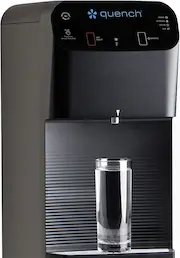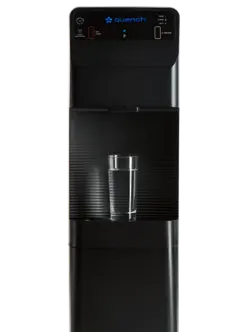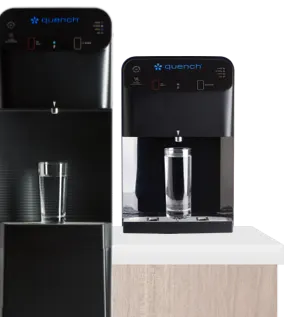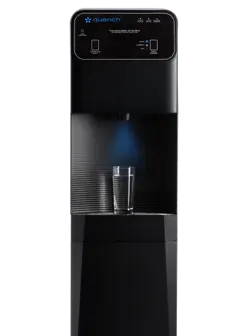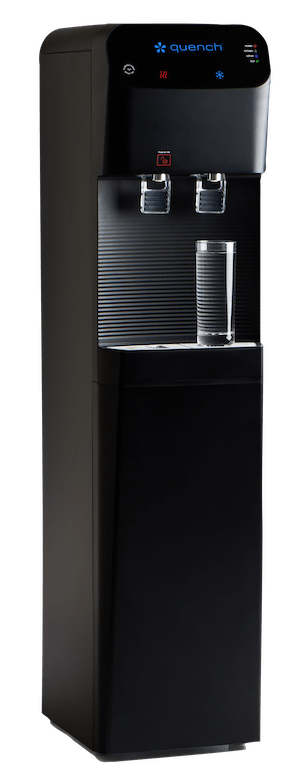Over the years, the topic of fluoride in drinking water has sparked considerable debate and concern among households and workplaces alike. While initially introduced to boost dental health, fluoride’s presence in water treatment processes has stirred discussions because of the potential health implications of overconsumption.
We’re exploring the origins of fluoride in drinking water, its intended benefits, and the rising interest in effective removal methods. Understanding which treatment methods work best to remove fluoride empowers you to make informed choices that ensure the safety and cleanliness of your drinking water.
Fluoride in Drinking Water: History, Levels, and Controversies
Fluoride’s journey into drinking water began in the early 20th century with two goals:
- Boost dental health.
- Prevent cavities.
According to the National Institute of Dental and Craniofacial Research, fluoride research dates back as early as 1901 when studies revealed low fluoride levels in water could help prevent tooth decay. By 1945, Grand Rapids, Michigan became the first city to add fluoride to water — reducing the population’s cavities by 60%. Fluoride within regulated levels is now considered a staple in many community water supplies, with over 200 million Americans benefiting from water fluoridation.
How Much Fluoride Is in Treated Water?
Water treatment facilities conduct routine tests and adjust fluoride levels to support public health initiatives that reduce tooth decay and enhance dental wellness. However, the specific fluoride content in treated tap water depends on regional treatment practices and natural fluoride levels in water sources.
The U.S. Public Health Service suggests maintaining fluoride levels in treatment between 0.7 mg/L. This concentration is deemed optimal for dental health while minimizing the risk of fluorosis — a condition caused by excessive fluoride intake during tooth development. To further minimize the chances of dental fluorosis, The U.S. Environmental Protection Agency (EPA) set a drinking water standard (i.e., the maximum amount of fluoride allowable in public drinking water systems) of 4.0 mg/L.
The Argument Against Fluoride in Drinking Water
Despite its widespread use, concerns remain about water fluoridation. There are three main reasons people question this process:
- Health risks: Some argue excessive fluoride intake can lead to dental fluorosis and skeletal fluorosis — raising concerns about potential health issues.
- Lack of consent: Opposers claim adding fluoride to public water supplies infringes on individuals’ rights to consent to medication.
- Environmental concerns: Individuals worry fluoride discharge into water systems will pose risks to aquatic ecosystems and wildlife.
Does Boiling Water Remove Fluoride?
While fluoride within recommended levels is usually deemed safe for consumption, you may opt to remove it from your drinking water based on personal preferences or medical reasons. And your initial instinct may be to boil your tap water to do this. But, is this actually an effective fluoride removal method?
According to the Centers for Disease Control and Prevention, the short answer is no. While boiling tap water can eliminate some impurities, pathogens, and harmful bacteria, fluoride remains unaffected. It’s a stable compound that doesn’t evaporate at the temperatures reached during boiling. Fortunately, if you’re concerned about fluoride intake, several alternative methods more effectively remove the mineral from your water supply.
Top Fluoride Filtration Methods for Residential and Workplace Settings
Discover some of the key water filtration systems that can help you minimize your daily fluoride exposure.
1. Reverse Osmosis Filtration
Reverse osmosis (RO) filtration is considered one of the most effective ways to purify fluoridated water. An RO system consists of a semi-permeable membrane that allows water molecules to pass through while trapping contaminants. Essentially, when fluoridated water flows through the RO membrane under pressure, fluoride ions, dissolved solids, and other impurities are retained on one side and purified water collects on the other for your enjoyment.
RO systems are renowned for their ability to produce clean drinking water, making them a popular choice for households and businesses seeking to reduce fluoride levels.
2. Distillation
In the distillation process, water is heated until it reaches its boiling point, causing it to vaporize. The resulting vapor rises, leaving impurities such as fluoride behind, and is then condensed back into liquid form. The outcome is highly purified water without fluoride content.
While boiling is a step in the process, keep in mind that distillation significantly outperforms boiling water in removing fluoride. In simple boiling, the mineral remains unaffected as water evaporates. However, because fluoride has a notably higher boiling point than water, it’s left behind in the distillation process. This means once the vapor condenses and returns to a liquid state, you’re left with fluoride-free water.
3. Ion Exchange
Ion exchange is another reliable method for minimizing your fluoride exposure because of the strong affinity between fluoride ions and the resin beads. What does this mean? In this process, resin beads containing positively charged ions are used to attract and bind with negatively charged fluoride ions in the water. As the water passes through the resin bed, fluoride ions are exchanged for the positively charged ions in the resin — successfully eliminating the mineral’s presence. This continues until the resin becomes saturated with fluoride ions and needs regeneration or replacement.
4. Activated Carbon Filters
Activated carbon filters, with their porous structure and high adsorption capacity, serve as another effective tool in reducing the fluoride levels in your water supply. In this water system, activated carbon granules capture fluoride ions as water flows through. The activated carbon has a large surface area with numerous pores that attract and retain fluoride ions, along with other contaminants and impurities. As water moves through the filter, fluoride ions stick to the carbon, reducing fluoride concentration.
With a renowned ability to target and capture a wide range of contaminants, carbon filters are typically a popular choice for households and businesses seeking to improve water quality.
5. Deionization
Deionization goes beyond ion exchange by completely removing all ions from water using ion exchange resins. During this process, water flows through a resin bed filled with ion exchange resins featuring positively and negatively charged sites. Fluoride ions in the water are drawn to the charged sites on the resin and exchanged with other ions; ultimately reducing the fluoride levels present in your drinking water.
The Value of a Layered Filtration Approach
While the filtration methods outlined above offer effective means to reduce fluoride levels, a layered filtration approach is recommended for the utmost assurance of water quality and taste. Integrating multiple techniques combines the strengths of each method to more comprehensively address diverse contaminants and impurities present in your water supply — including fluoride. Plus, integrating a remineralization process can help reintroduce essential minerals into your drinking water, enhancing its flavor. This not only promotes long-term well-being but also offers satisfaction and peace of mind with every sip.
For those seeking the finest filtration for their water supply, you can consider Quench machines featuring quenchWATER+. With quenchWATER+, a specialized mineral-infused and electrolyte-enhanced alkaline water, your drinking water undergoes optimal filtration. Utilizing a sophisticated 5-filter setup, including reverse osmosis technology, Quench workplace water machines ensure that fluoride and potentially harmful impurities are thoroughly eliminated while reintroducing essential minerals to the water supply. The result is revitalizing alkaline water, promoting easy hydration absorption and offering a crisp, clean taste.
Quenching Your Thirst for Fluoride-Free Water
Drinking water containing fluoride at recommended levels is generally considered safe and even beneficial for dental health. But, excessive consumption can pose potential health risks for certain individuals, and some may simply prefer fluoride-free water.
If you’re looking for a filtered water solution that effectively removes this mineral, Quench can help. Quench’s bottleless coolers that use reverse osmosis filtration eliminate water’s fluoride content, giving you access to an endless supply of clean, filtered, and great-tasting water on demand. This guarantees peace of mind with fluoride-free water and promotes greater hydration long term.
Ready to enjoy the benefits of fluoride-free water? Explore Quench’s bottleless coolers with reverse osmosis filtration today or get a free estimate to start hydrating with confidence.
